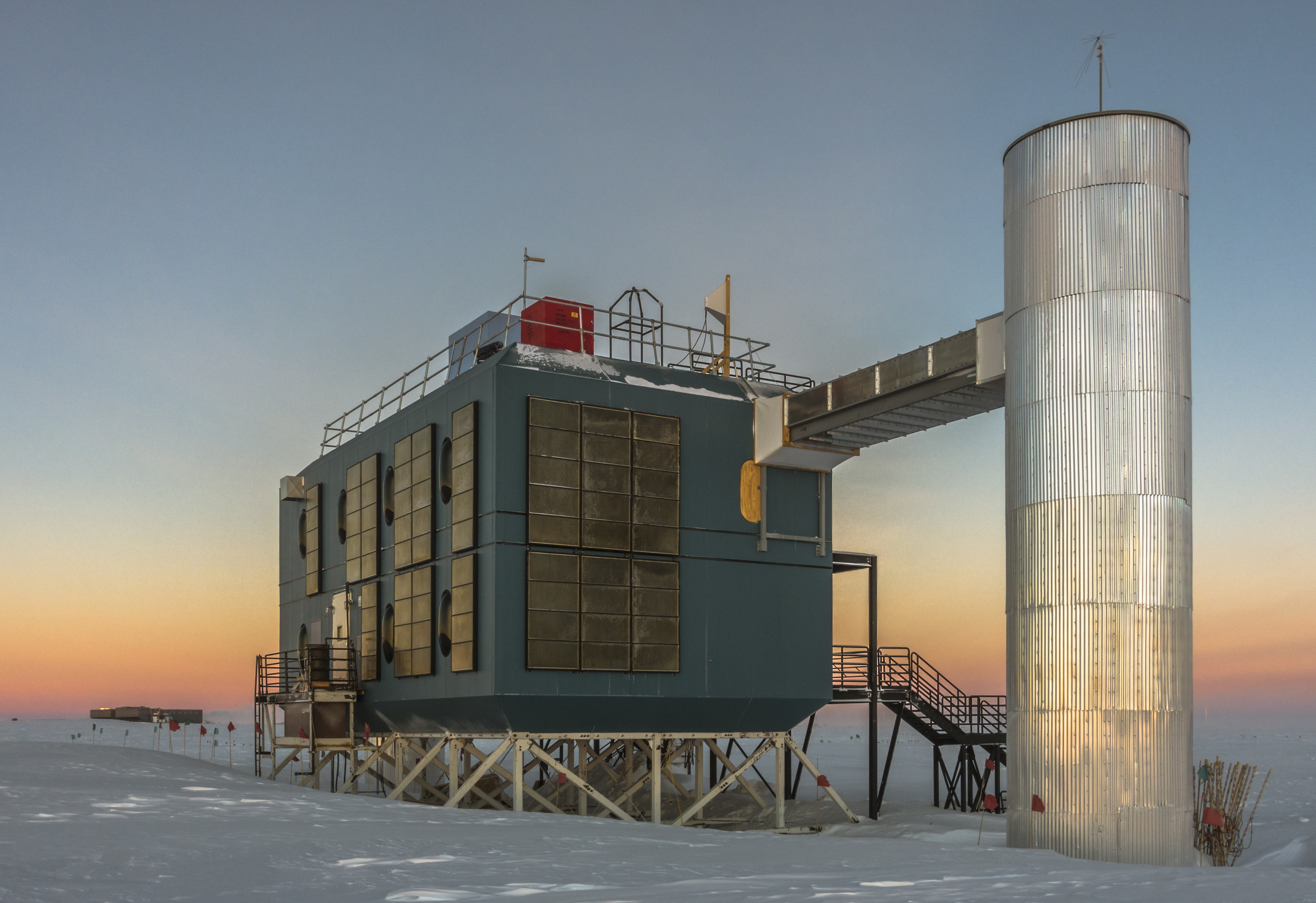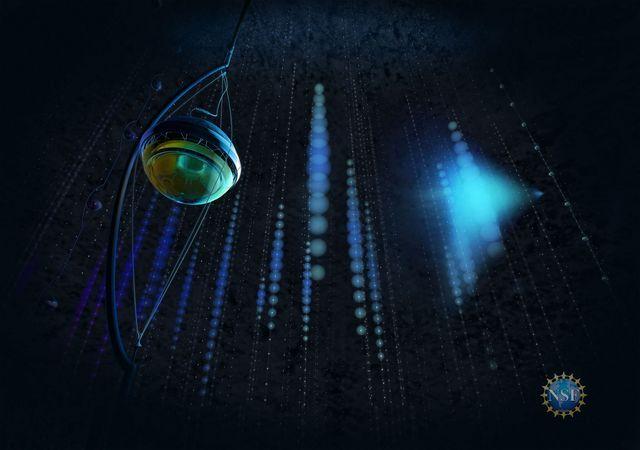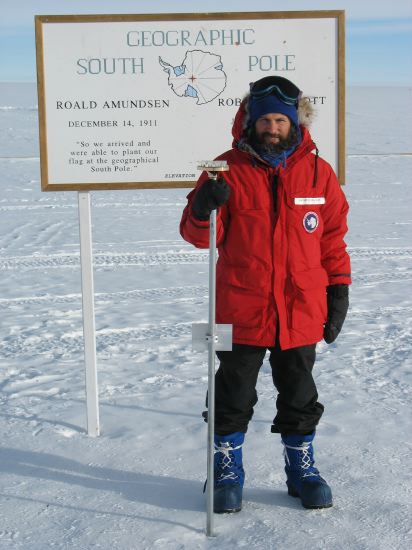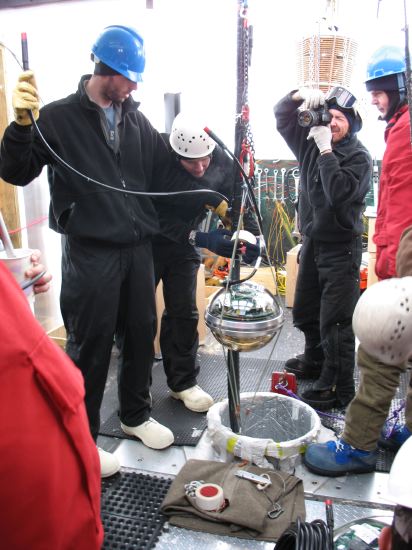Dozens of scientists and engineers across multiple divisions at the Department of Energy’s Lawrence Berkeley National Laboratory (Berkeley Lab) played a role in the design, development, and deployment of the IceCube neutrino sensor array at the South Pole. They pioneered the ice-embedded digital optical modules (DOMs) and circuitry that are IceCube’s key enabling technologies. Berkeley Lab researchers also contributed to a predecessor experiment called AMANDA (the Antarctic Muon and Neutrino Detector Array).
In this Q&A, Berkeley Lab physicist Spencer Klein, who has been a part of the IceCube collaboration since 2004, discusses Berkeley Lab’s historic contributions to IceCube, and IceCube’s contributions to science.
Klein has had several leadership roles in IceCube and led its publications committee.
Q: How is the new result announced by the IceCube Collaboration – which shows a likely source of high-energy neutrinos – important for the field of astrophysics?
A: This search, for the first time, points us to the super-energetic particle accelerators that we know exist in our galaxy. These accelerators can emit particles with energies a billion times higher in energy than CERN’s Large Hadron Collider, the most energetic human-made particle accelerator.
We would like to know how nature builds such accelerators, but first we have to find them. The neutrinos that IceCube saw in this new result are our first direct sign that these accelerators are located in active galactic nuclei, which are galaxies with supermassive black holes at their center. The black holes draw in matter, emitting some of it as a relativistic jet along the axis of the galaxy. This jet had been considered a likely site of acceleration, and now we have evidence for that. Although we need confirmation, this is a huge step forward. We have progressed from “Where are the accelerators?” to “How do they work?”
Q: Describe the R&D effort that went into the more than 5,400 digital optical modules (DOMs) for IceCube, and Berkeley Lab’s contributions to their development.
A: Berkeley Lab researchers contributed several key ideas to the IceCube hardware and provided the systems engineering to design ultralow-power data-acquisition systems that would function reliably at 50 degrees below zero while buried a mile deep in the polar ice cap.
We pioneered the DOM concept, combining a sensitive optical sensor known as a photomultiplier tube with a complete data-acquisition system in a single module – almost like a small space satellite. We built the first prototype string that proved the idea would work. Previous experiments had buried photomultiplier tubes in ice but sent their analog signals over mile-long cables to the surface; this transmission led to considerable degradation of the signals. By digitizing the signals in the buried DOMs, they can be recorded with much greater precision.
Q: What were some of the challenges to building the DOMs?
A: We had to solve some key problems, such as how can we keep the data-acquisition systems in each DOM synchronized to better than 3 billions of a second – the time required for light to travel about a yard? And how can we make the DOMs reprogrammable from the surface, but also ensure that we couldn’t permanently “break” them by misprogramming?
With large and diverse engineering and computing divisions, Berkeley Lab provided the systems engineering that was critical to the success of the IceCube hardware – most notably the very low DOM failure rate. At the peak of construction, the Lab had over 25 people working on IceCube – all with expertise in different areas.

The IceCube Lab in March 2017, with the South Pole station in the background. (Credit: IceCube Collaboration)
Q: How well is IceCube functioning, and how would you quantify its performance and its continuing discovery potential?
A: IceCube is a huge success. The hardware is working almost perfectly. We have had only one DOM failure in the past three years – a phenomenal success rate.
The collaboration is doing an excellent job of finding neutrinos in the huge background of downward-going cosmic-ray muons, and in selecting astrophysical neutrinos using two different, independent methods. We have also done an excellent job of understanding our detector well enough to be able to use IceCube data for precision measurements.
IceCube has found far broader scientific uses than we could have originally imagined. We use it to study neutrino oscillations and interactions, to search for exotic particles like magnetic monopoles, and to search for low-energy neutrinos from supernovae, to name just a few topics.
When I joined IceCube in 2004, there were still skeptics who would tell us to our faces that IceCube would never work. We haven’t heard that in a while.

This rendering shows a DOM (left) and blue light signals produced by secondary particles that were created as a neutrino interacted with the Antarctic ice. (Credit: Nicolle R. Fuller/NSF/IceCube)
Q: Has the success of IceCube paved the way for other similar and larger experiments?
A: We are ready to move forward with an extension of IceCube, with seven new strings placed on a denser grid than the main detector. This will allow us to study neutrinos with lower energies than we can now, and also to more accurately measure the optical properties of the Antarctic ice. The optical measurements are the key to more precise measurements of almost everything we do.
Our friendly competition, the European KM3NeT collaboration, is deploying detectors in the Mediterranean Sea. By virtue of its location, KM3NeT will complement IceCube by having a clear (below the horizon) view of the center of our galaxy.
Q: What are you most excited about in the continuing operation of IceCube, and for the field of neutrino astronomy going forward?
A: We need to confirm that AGNs (active galactic nuclei) are a source of astrophysical neutrinos, most likely by observing neutrinos from a different nearby AGN while it is in an active state (emitting more gamma rays than usual). Then we need to see if AGNs are responsible for all of the astrophysical neutrinos that IceCube sees, or whether there are also other sources. We would also like to see which subtypes of AGN produce neutrinos.
Q: What would be the ultimate next-gen experiment to build upon IceCube’s success, and what would it tell us about the universe? How far away are we from realizing that experiment?
A: We would like to build a detector 10 times bigger than IceCube sometime in the 2020s. To keep this affordable, we will use more advanced light detectors and space them farther apart. It should have the sensitivity to see neutrinos from many sources, enabling us to study multiple astrophysical particle accelerators in some detail. We may even learn something that will help us build better accelerators here on Earth.
More:
- View a related Berkeley Lab press release: IceCube Neutrinos Point to Long-Sought Cosmic Ray Accelerator
- Read the original press release from the IceCube Collaboration
- IceCube overview
- Read Spencer Klein’s Neutrino Hunting in Antarctica blog
- “IceCube: The Polar Particle Hunter,” by Spencer Klein, IEEE Spectrum, Jan. 26, 2011
- Spencer Klein’s 2006 visit to the South Pole
- Berkeley Lab’s historic IceCube photos

